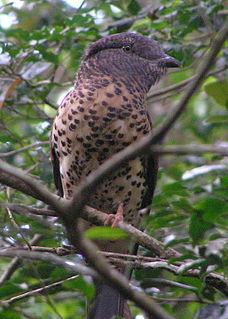
The cuckoo-roller or courol is the only bird in the family Leptosomidae, which was previously often placed in the order Coraciiformes but is now placed in its own order Leptosomiformes. The cuckoo-roller is at the root of a group that contains the Trogoniformes, Bucerotiformes, Piciformes, and Coraciiformes.

The gracilis muscle is the most superficial muscle on the medial side of the thigh. It is thin and flattened, broad above, narrow and tapering below.
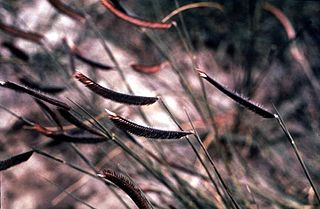
Bouteloua gracilis, the blue grama, is a long-lived, warm-season (C4) perennial grass, native to North America.
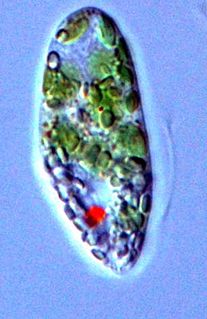
Euglena gracilis is a freshwater species of single-celled alga in the genus Euglena. It has secondary chloroplasts, and is a mixotroph able to feed by photosynthesis or phagocytosis. It has a highly flexible cell surface, allowing it to change shape from a thin cell up to 100 µm long, to a sphere of approximately 20 µm. Each cell has two flagella, only one of which emerges from the flagellar pocket (reservoir) in the anterior of the cell, and can move by swimming, or by so-called "euglenoid" movement across surfaces. E. gracilis has been used extensively in the laboratory as a model organism, particularly for studying cell biology and biochemistry.
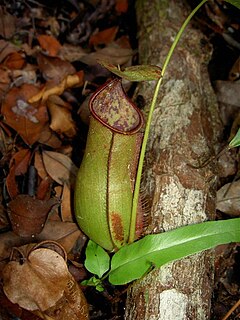
Nepenthes × cantleyi is a natural hybrid involving N. bicalcarata and N. gracilis. It is quite rare outside Brunei, despite its parent species being more widespread throughout Borneo.
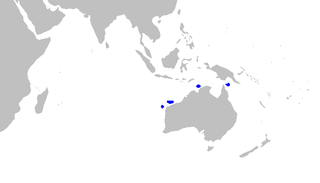
The slender sawtail catshark is a little-known species of catshark, part of the family Scyliorhinidae, endemic to northern Australia. It is found over the continental slope in 290–470 m (950–1,540 ft) on water. Growing to 34 cm (13 in) long, this shark has a slim gray body with four dark saddle markings below the dorsal fins and on the caudal fin, as well as a prominent crest of enlarged dermal denticles along the dorsal edge of the caudal fin. The slender sawtail catshark is not valued by fisheries but is taken as bycatch. The International Union for Conservation of Nature (IUCN) presently lacks enough information to assess its conservation status.

Nepenthes × bauensis is a natural hybrid involving N. gracilis and N. northiana.

The western spotted skunk is a spotted skunk of western North America.
Parastenolechia is a genus of moths in the family Gelechiidae.
Parastenolechia acclivis is a moth of the family Gelechiidae. It is found in northern Vietnam.
Parastenolechia suriensis is a moth of the family Gelechiidae. It is found in southern and central Korea.
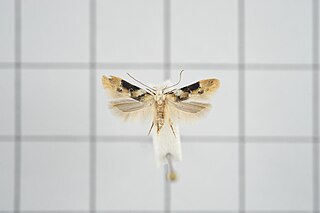
Parastenolechia asymmetrica is a moth of the family Gelechiidae. It is found in Taiwan and Korea.
Parastenolechia albicapitella is a moth of the family Gelechiidae. It is found in Korea.
Parastenolechia argobathra is a moth of the family Gelechiidae. It is found in Korea, Japan, the Russian Far East and China.
Parastenolechia claustrifera is a moth of the family Gelechiidae. It is found in China (Zhejiang) and Taiwan.
Parastenolechia issikiella is a moth of the family Gelechiidae. It is found in Japan and Korea.
Parastenolechia superba is a moth of the family Gelechiidae. It is found in Korea and the Russian Far East.
Parastenolechia collucata is a moth of the family Gelechiidae. It is found in Korea and the Russian Far East.
Parastenolechia formosana is a moth of the family Gelechiidae. It is found in Taiwan.

Parastenolechia nigrinotella is a moth of the family Gelechiidae. It is found in Turkey, on Sicily and in Spain, France, Italy, Austria, the Czech Republic, Slovakia, Croatia, Hungary, Romania, Bulgaria, North Macedonia and Greece.









